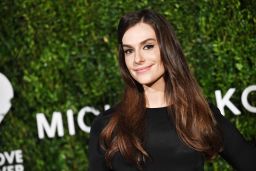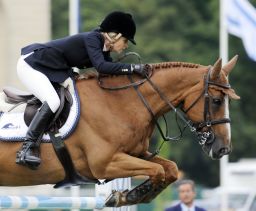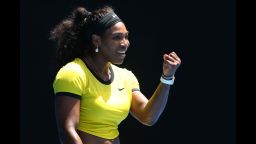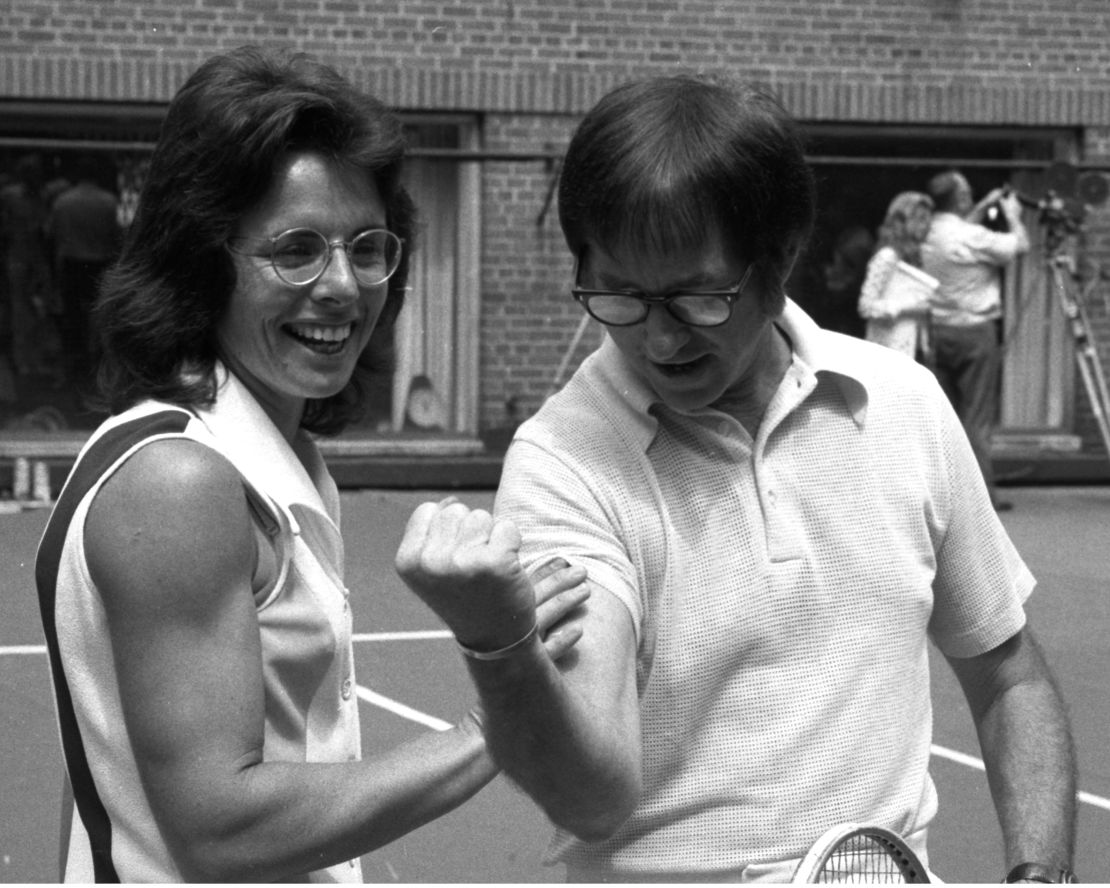Story highlights
Equestrianism one of few professional sports where both genders compete against each other
Longines Global Champions Tour money leader is a woman
Women allowed to compete in riding in the Olympics in 1952
With the “Battle of the Sexes” movie about the 1973 tennis match between Billie Jean King and Bobby Riggs hitting screens this month, all eyes will once again focus on gender equality in professional sports.
Or rather, the lack thereof.
Although huge strides have been made since the 2012 London Olympics, when every Olympic sport had female representation for the first time, women athletes remain largely underpaid and overlooked. According to London-based charity Women in Sport, women’s sports make up just 7% of all media coverage in the UK and generate a mere 0.4% of all sports sponsorship money.
But there is one professional sport that stands out as a beacon of gender equality: equestrianism.
“That’s the amazing thing about this sport, it’s the only Olympic sport where men and women have an equal playing field,” rider Ariana Rockefeller told CNN by phone.

“They compete against each other and with each other,” added the American, the great-great granddaughter of Standard Oil founder John D. Rockefeller who competed on the Longines Global Champions Tour in Europe for the first time this summer.
Equal prize money, billing
Although equestrian sports returned to the Olympic family in 1912, only male cavalry officers were allowed to take part. At the 1952 games, women were allowed to participate in dressage, followed by showjumping in 1956 and eventing in 1964.
More than six decades later, men and women compete against each other at all levels of competition, with both sexes receiving equal prize money and billing.
In fact, in a sport where the main focus is on the bond between animal and human and less on physical strength and endurance, women often beat men – both in the arena and at the bank. And unlike most other professional sports, female coaches are common in riding.
READ: Ariana Rockefeller on fashion, family and horses
Women rider tops money rankings
This week Rome hosts the penultimate round of action in the 2017 Longines Global Champions Tour (LGCT).
Australian rider Edwina Tops-Alexander tops the all-time prize money list on LGCT for the world’s top show jumpers with close to €3.5 million ($4.2 million) in earnings.
Tops-Alexander, a two-time winner of the overall LGCT crown who competed in her first show earlier this month after giving birth to a baby girl at the end of July, was also the first rider to earn more than one million euros ($1.2 million) in prize money.

Compare that to tennis, often held up as one of the most egalitarian of all professional sports because men and women have been receiving equal prize money at the four grand slam events since 2007.

But look closer at the numbers and a different picture emerges.
Although no one has won more grand slam singles titles in the Open era than Serena Williams with 23, her $84.5 million in career prize money is dwarfed by Novak Djokovic, who has amassed a record $109.8 million in on-court earnings yet has won 12 majors.
Psychological advantage?
Last month, American riders Laura Kraut, Lillie Keenan, Lauren Hough and Beezie Madden became the first all-female team in the 91-year history of FEI Nations Cup jumping to clinch the Aga Khan Cup in Dublin.
The win was secured by 2008 Olympic team gold medalist Kraut, who produced two clear rounds despite struggling with stomach flu in the days leading up to the Dublin Horse Show.
“It was special, and they made a big deal of it,” Kraut told CNN by phone, referring to the event’s organizers. “It took a long time.”
Women bring “maybe a little more of a sympathetic side,” to riding, according to Kraut, who also works as a coach to riders including Rockefeller.
“We as women learn to deal with some problems, we have to go at it maybe more from the psychological end than from the physical end, dealing with the horses as well as people,” Kraut said.
READ: Tops-Alexander’s horse of a lifetime
Affection
Tops-Alexander, a three-time Olympian, believes female riders have an edge over men.
“As a rule, we give our affection more and horses thrive on that; they know when you get on or if you are mad or unhappy,” she said on her website in 2015.
“So there are a lot of advantages for women. I don’t see it as me competing against men. I see it as horses competing against each other.”
“I wouldn’t say that we have an edge,” said Kraut, who ranks 17th on the all-time prize money list of the LGCT with more than €1.1 million ($1.3 million) in earnings.
“But I think there are certain horses that definitely suit men better and then there are certain horses that suit women better.
“And the more sensitive the nature of the horse, they’re normally the ones that would react better with a female rider.
“Some of the stronger, more bullish type horses who really wouldn’t have time for affection, they might go better for somebody who is stronger and could ride more like a man.”

Stronger together
In that “Battle of the Sexes” match, 39-time major winner King beat Riggs in straight sets in 1973. She also tried to unite the men’s and women’s tennis tours in the early 1970s on the basis one product would be easier to market to sponsors and broadcasters and benefit everyone, but the men turned her down.
Although the men’s ATP World Tour and the women’s WTA Tour stage combined events, they operate as two completely separate circuits for most of the year, often at the same time.
Kraut believes her sport has thrived from both genders competing together.
“We are always together, there is never, ever a time when we are not,” she said.




















